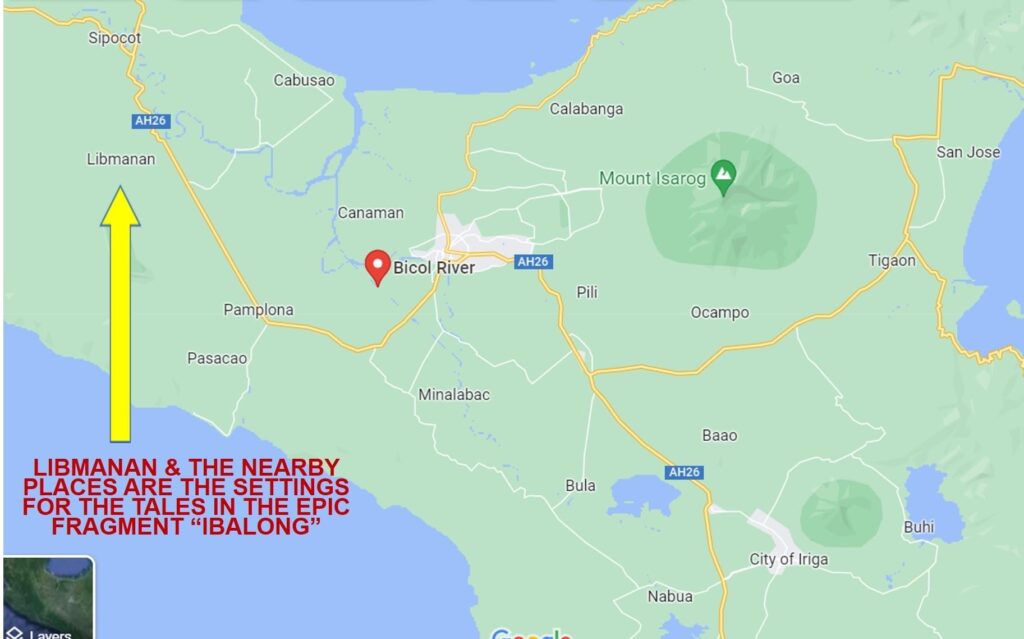By Abdon M. Balde Jr.
I FOUND THE KINGDOM OF HANDIONG.
It was year 2004 while I was driving my van from Albay going back to Manila when I suddenly decided to pass by the town of Libmanan, Camarines Sur. Libmanan is 35 kilometers from Naga City. The town was over 7 kilometers from the national highway and my wife wondered what got into my mind. It was past 10am and nearing luch time. I said I won’t be long.
We crossed the 5-span bridge over the huge Bicol River and went straight to the municipal hall. The mayor was not around so I talked to the Administrator. I said I am researching about the epic Ibalong. His face went blank. It was as if he did not know what I was talking about. He timidly answered, “We have a sitio named Andong…” I noticed a simple map on the wall so I walked right to it and lo and behold! I saw “Aslon” and “Malbogon”—two important sites in the Ibalong epic. I felt the hair behind my neck stood up. “This Malbogon, is it an island?” I asked. His answer, “Well, it is surrounded by water…” That was enough for me. In my mind I could immediately picture the island formed when there were simultaneous eruptions of volcanoes—as described in the epic. According to Kadunung, the narrator of the tale, Malbogong was the place where the two witches Hilang and Lariong lived.
Not knowing how to answer more of my questions, the Municipal Administrator gave me a souvenir program of their latest town fiesta. As I scanned the pages, I saw the image of the old church, the Parish of Saint James the Disciple—Santiago de Matamoros—the usual patron of the very first settlements of the Spanish friars. Saint James is also the patron saint of Libon (Santiago the Libon) founded by Capt Juan de Salcedo in 1572 and Cagsawa, Albay founded by San Pedro de Bautista in 1578.

Then another surprise: listed among the friars who became parish priests of Libmanan were Fray Bernardino Melendreras (1847-1843) and Fray José Castaño (1891-1894). The existing text in Spanish language of the epic fragment was written by Melendreras—who said it was a transcription of a tale he heard from a wandering bard in Bikol. José Castaño was the author of the long essay “Breve noticia acerca del origen, religion, creencias y supersticiones de los antiguos indios del bicol” which contained the 60 stanzas verse written by Melendreras. José Castaño submitted his essay to Wenceslao Retana who in turn published it within Volume 1 of his monumental work, “Archivo del Bibliofilo Filipino” in Madrid, Spain in 1895.
Again, I was dismayed by the lack of knowledge of the inhabitants about the epic Ibalong. Even if the tale is disputably just myth or folktale, the people of Libmanan should have been aware of its significance in the culture of the place. Almost all the settings were in Libmanan: Aslong, Andong, Malbogong, the swamp area of Ponong, Sipocot and the caves of Kulapnitan, Inarihan River, etc.
When I left Libmanan that morning I had no doubt that I found the Kingdom of Handiong. It felt as if I have found Arthur’s Camelot or Gilgamesh’s Kingdom of Uruk. I had the firm resolve that I would be visiting Libmanan again and again.




